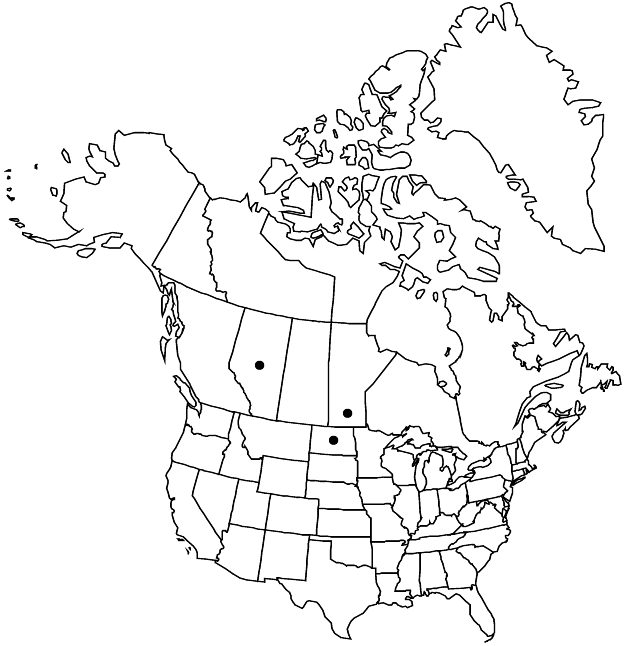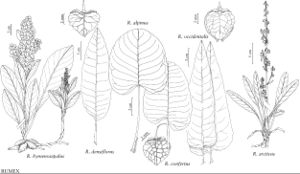Difference between revisions of "Rumex confertus"
Enum. Pl., 397. 1809.
FNA>Volume Importer |
imported>Volume Importer |
||
| (3 intermediate revisions by 2 users not shown) | |||
| Line 8: | Line 8: | ||
}} | }} | ||
|common_names=Russian dock | |common_names=Russian dock | ||
| + | |special_status={{Treatment/ID/Special_status | ||
| + | |code=I | ||
| + | |label=Introduced | ||
| + | }}{{Treatment/ID/Special_status | ||
| + | |code=F | ||
| + | |label=Illustrated | ||
| + | }} | ||
|basionyms= | |basionyms= | ||
|synonyms={{Treatment/ID/Synonym | |synonyms={{Treatment/ID/Synonym | ||
|name=Rumex alpinus var. subcalligerus | |name=Rumex alpinus var. subcalligerus | ||
|authority=Boissier | |authority=Boissier | ||
| + | |rank=variety | ||
}} | }} | ||
|hierarchy=Polygonaceae;Polygonaceae subfam. Polygonoideae;Rumex;Rumex subg. Rumex;Rumex sect. Rumex;Rumex confertus | |hierarchy=Polygonaceae;Polygonaceae subfam. Polygonoideae;Rumex;Rumex subg. Rumex;Rumex sect. Rumex;Rumex confertus | ||
| Line 27: | Line 35: | ||
|elevation=300-700 m | |elevation=300-700 m | ||
|distribution=Alta.;Man.;N.Dak.;e;ec Europe;w Asia (the Caucasus;Siberia);introduced elsewhere. | |distribution=Alta.;Man.;N.Dak.;e;ec Europe;w Asia (the Caucasus;Siberia);introduced elsewhere. | ||
| + | |introduced=true | ||
|discussion=<p><i>Rumex confertus</i> was placed in subsect. Conferti Rechinger f. This species is common and ecologically successful in central and eastern Europe; it may be expected elsewhere in temperate regions of North America.</p> | |discussion=<p><i>Rumex confertus</i> was placed in subsect. Conferti Rechinger f. This species is common and ecologically successful in central and eastern Europe; it may be expected elsewhere in temperate regions of North America.</p> | ||
|tables= | |tables= | ||
| Line 36: | Line 45: | ||
-->{{#Taxon: | -->{{#Taxon: | ||
name=Rumex confertus | name=Rumex confertus | ||
| − | |||
|authority=Willdenow | |authority=Willdenow | ||
|rank=species | |rank=species | ||
| Line 51: | Line 59: | ||
|publication title=Enum. Pl., | |publication title=Enum. Pl., | ||
|publication year=1809 | |publication year=1809 | ||
| − | |special status= | + | |special status=Introduced;Illustrated |
| − | |source xml=https:// | + | |source xml=https://bitbucket.org/aafc-mbb/fna-data-curation/src/2e0870ddd59836b60bcf96646a41e87ea5a5943a/coarse_grained_fna_xml/V5/V5_1062.xml |
|subfamily=Polygonaceae subfam. Polygonoideae | |subfamily=Polygonaceae subfam. Polygonoideae | ||
|genus=Rumex | |genus=Rumex | ||
Latest revision as of 22:07, 5 November 2020
Plants perennial, glabrous or weakly papillose-pubescent especially when young, with fusiform, vertical to oblique rootstock or short rhizomes. Stems erect, branched above middle, 50–100(–130) cm. Leaves: ocrea mostly deciduous or rarely partially persistent at maturity; blade ovate-triangular, broadly ovate, or ovate-elliptic, 20–30 × 15–25 cm, base deeply and broadly cordate, margins entire to obscurely repand, usually slightly crisped or undulate, apex obtuse to subacute. Inflorescences terminal, occupying distal 1/2 of stem (branches often slightly arcuate at base), rather dense, widely paniculate. Pedicels articulated in proximal 1/3, filiform, 4–10 mm, articulation distinctly swollen. Flowers 15–30 in whorls; inner tepals orbiculate-reniform or broadly scutate, 6–9 × 6–11 mm, as long as wide or nearly so, base cordate to subcordate, margins entire or subentire, occasionally irregularly erose near base, apex abruptly acute to acute; tubercles usually 1, small, 1–2 mm, normally less than 2 times as wide as inner tepals, rarely absent or indistinct. Achenes reddish brown, 3–3.5 × 1.7–2.5 mm. 2n =40.
Phenology: Flowering late spring–summer.
Habitat: Roadsides, waste places, meadows, river valleys
Elevation: 300-700 m
Distribution

Introduced; Alta., Man., N.Dak., e, ec Europe, w Asia (the Caucasus, Siberia), introduced elsewhere.
Discussion
Rumex confertus was placed in subsect. Conferti Rechinger f. This species is common and ecologically successful in central and eastern Europe; it may be expected elsewhere in temperate regions of North America.
Selected References
None.
